As part of the aquaculture sector, different cultural practices are applied to various aquatic organisms, ranging from finfish, crustaceans, seaweed, mollusks, and other aquatic animals. Due to this, the aquaculture sector is opening up a new window of opportunity for rural and urban areas regarding their socio-economic development due to its positive environmental impact.

Even though the aquaculture sector is expanding, the industry faces problems, such as environmental degradation, water scarcity, limited land available for aquaculture, and high input costs due to its expansion. Therefore, the aquaculture sector needs to become more sustainable in the coming years. Sustainable aquaculture is defined as aquaculture that emphasizes environmental, economic, and social sustainability to build capacity and utilize land effectively.
This sector will face global challenges in the future due to social and economic pressure on natural resources and aquatic ecosystems. Examples include environmental degradation, water scarcity, population explosion, food scarcity, global hunger, etc. In the present and near future, sustainable aquaculture can offer rays of hope for addressing these challenges. Aquaculture and fisheries play a crucial role in food security and employment for millions of people. In addition, it provides a helping hand to millions of people in the following ways:
- A creator of employment.
- Supplier of nutritious food.
- Generator of income and economic growth
Unlocking the Potential of Sustainable Aquaculture
Different Approaches for Making Aquaculture Sustainable:
Focus on Environmental Impacts
- Development of suitable technology for environmentally feasible aquaculture practice
- Mitigation strategies for environmental pollution through microbial, Nanotechnology, practicing holistic methods like multi-trophic and organic aquaculture.
In case you missed it: How to Start Sustainable Pig Farming: Business Plan, Benefits, and Requirements
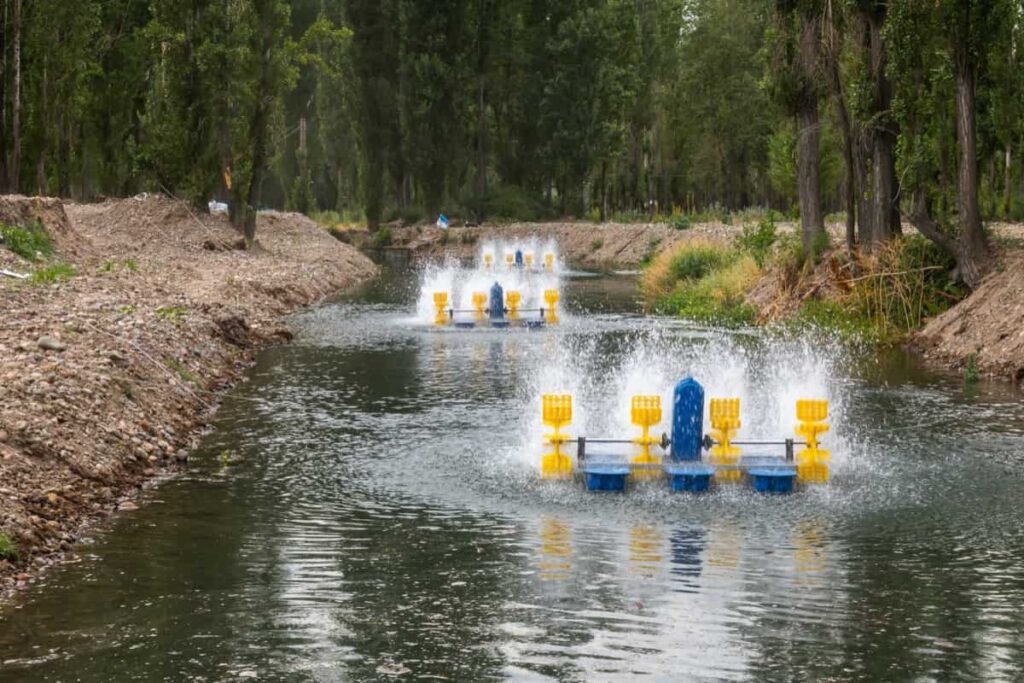
Use of Renewable Energy Sources
- The use of renewable energy in aquaculture can be a boon as it is cost-effective, environmentally friendly and carbon-neutral technology
- Various renewable energy techniques enter the aquaculture industry, such as wind-powered water pumps, solar-powered water heating systems, etc.
- Investigating these technologies reduces long-term operating costs and reducing environmental implications.
Reduce Dependency on Fishmeal as Feed Ingredient
- As feed cost in aquaculture is skyrocketing due to the increased demand for fishmeal, which is also causing overexploitation of capture fisheries
- Shifting dependency from animal-based feed ingredients to plant-based can be served as a way for sustainable practice.
- Research on waste to wealth as a feed ingredient also should be promoted
Promotion of Sustainable Aquaculture
- Rewarding sustainable farming practices in aquaculture through government policies can be.
- Subsidy on input costs for sustainable aquaculture farmers should be done.
- Awareness and encouragement for sustainable aquaculture can be practiced.
The practice of Sustainable Organic Aquaculture
- Organic aquaculture is based on the use of organic inputs in aquaculture.
- No use of inorganic fertilizer, pesticides, antibiotics
- It produces healthy fish completely devoid of pesticide and antibiotic residues.
- Many organic aquaculture issues still need to be resolved; steps should be taken to encourage and enhance organic aquaculture as a sustainable practice of aquaculture.
In case you missed it: Sustainable Goat Farming: Business Plan, Benefits, and Requirements
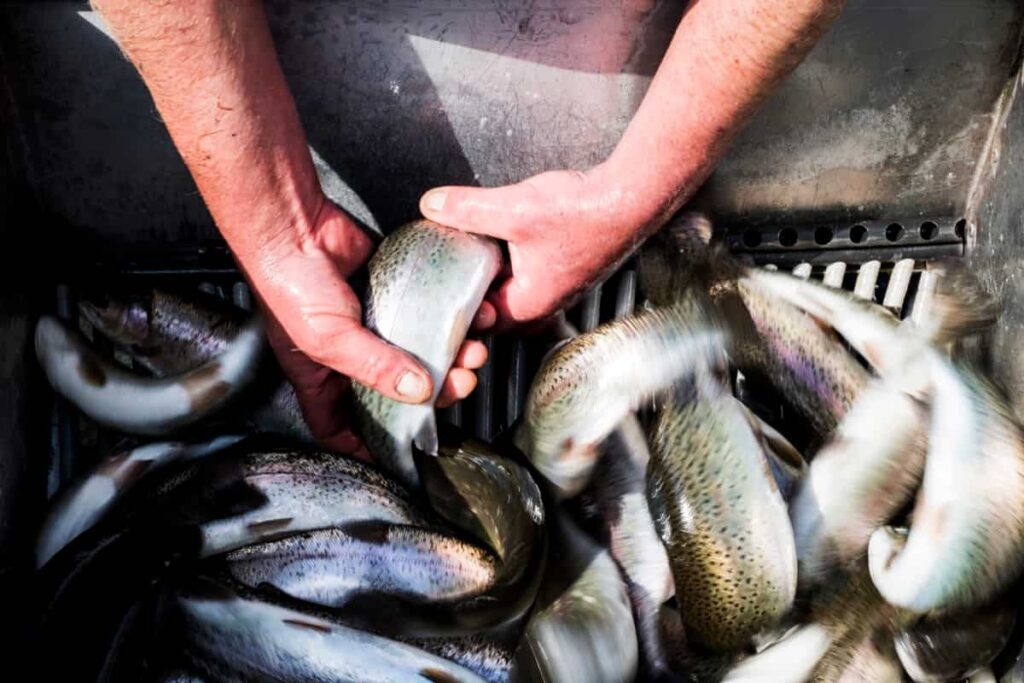
Six Tips on How to Make Your Fish Farm More Environmentally Sustainable
Globally, the aquaculture sector continues to grow at a fast pace – but there is also a growing environmental impact associated with the sector. In the last few decades, old-school aquaculture has evolved into a boom-and-bust venture; farmed salmon are displacing indigenous salmon and other fish from their natural habitats, while tonnes of aquaculture sludge quietly blanket coral reefs and other natural habitats, degrading them.
Most aquaculture operations take place in Southeast Asia, often using small ponds or cage systems that smallholder families or local companies manage. Due to their diversity and unique biomes, Africa and Southeast Asia are characterized by their exceptional levels of biodiversity and unique biomes. Limiting the impact of aquaculture activities that occur locally is doubly important.
Fortunately, many forward-looking aquaculture operators today are prepared to take increasing responsibility for reducing the environmental impacts of their business as a result of having the technology, know-how, and heart to do so. Below are some tips that can be used by small-scale aquaculture operators, especially those in Asia and Africa, to reduce their environmental impact and ensure their operations are sustainable.
Choose the Right Species
An invasive non-native species (INNS) refers to plants or animals that do not naturally occur in a specific region and can spread rapidly enough to rob native species of their resources. As a result, these species may eventually overtake native species, replace them, or hybridize with them. In many parts of the world, this has already occurred as fish such as the highly adaptable tilapia are displacing native freshwater species across the tropics.
Non-native salmon have displaced the population of native salmon in colder climates due to the repeated escape of non-native salmon from their pens. On the other hand, native species will perform better because they have developed traits and habits better suited to their local ecosystem, enabling them to flourish. Local demand is often higher, as people from a specific region prefer to consume familiar and previously consumed species. By doing this, farmers can get higher prices and have a very real incentive to pick native species over exotic ones as a result.
Select a Suitable Farm Site
Ecologically sensitive areas, such as swamps and coral reefs, should be avoided when selecting a farm site. For example, clearing mangrove forests and wetlands and converting them into fish ponds could severely affect local biodiversity. Eventually, farm effluents would have a significant negative impact as well. The influx of farm effluents will result in eutrophication, causing murky waters, blotting out sunlight, and negatively affecting plants, corals, and other organisms in the area.
In case you missed it: Humic Acid Fertilizer Uses: Role, Application Methods, Dosage, and Benefits for Sustainable Agriculture
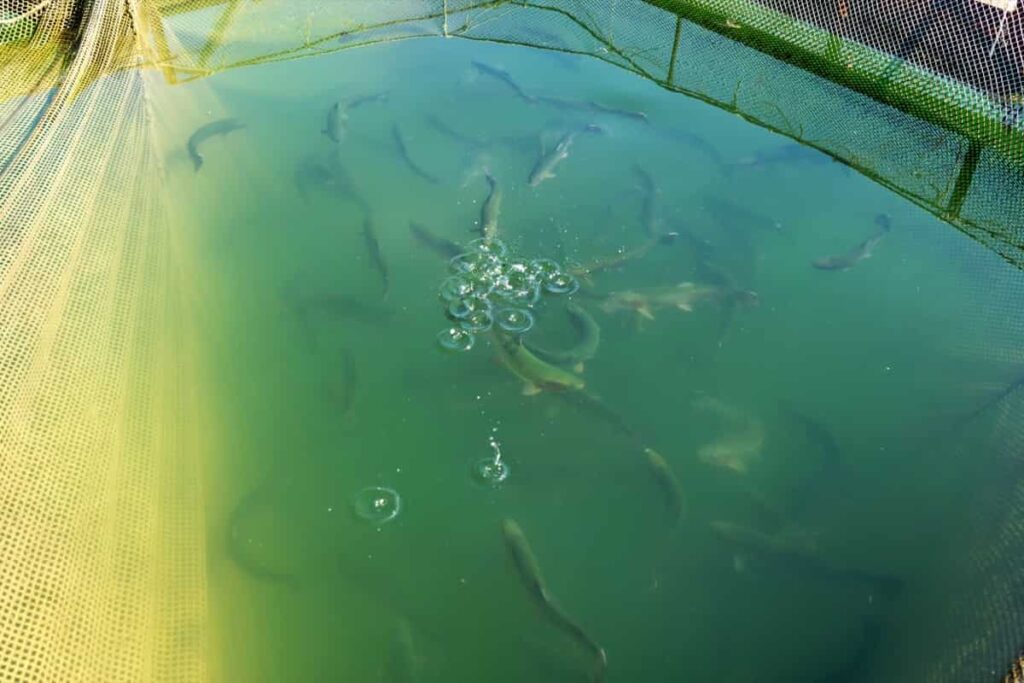
In selecting sites for marine cages, unless you have the capital to buy top-of-the-line equipment, avoid areas exposed to big storms since they can repeatedly damage expensive and hard-to-repair pens and cages. Choose a sheltered area that is protected from high waves instead.
Farm Design and Layout
Traditional fish farms, especially pond farms, directly discharge untreated wastewater into the surrounding environment. This poses a serious concern for the natural environment and communities that often use water from public canals to wash dishes, drink, and bathe. As a result, nearby fish farms are also at risk since potential pathogens can spread quickly and easily.
As a result, pond operations should be designed to treat and reuse this water. By allocating extra ponds for water treatment, this can be accomplished. Using a settling pond, solids can collect on the pond bed. The water can be cleaned by filter feeders such as bivalves and mangrove plants, while wood chips can remove excessive nitrates. In the final step, chemicals can be added to kill pathogens if necessary.
Discharged wastewater should undergo a similar treatment before disposal. A biofloc system can also be incorporated into the previous recommendation, where waste materials like uneaten feed and feces can be used to feed fish and shrimp, thereby reducing waste output and feed costs and increasing farm productivity by 20 percent.
Adopting these practices not only improves environmental sustainability but also minimizes water usage and reduces the spread of pathogens on the farm due to improved biosecurity. A reduction in disease outbreaks greatly improves the financial performance of farms. A proper farm design and careful planning will benefit farmers and the environment in the long run.
Manage Feeding Practices
In and around fish farms, feed contributes the most waste. Fish will ignore a great deal of feed when fed trash fish or low-quality pellets. Water quality will deteriorate as these sink to the bottom. As a result of their release into the surrounding environment, these effluents also negatively impact water quality. In the same way, low-grade feed pellets with excessive protein content result in fish feces being contaminated by unused nutrients.
For this reason, it is suggested that you use only pellets that are specially designed for your chosen fish species. Additionally, high-quality food increases farm performance by increasing growth rates and improving health. Feeding practices play an equally important role in reducing pollution.
It is common for farmers to overfeed their stock to make sure they grow well, but this often results in them wasting money and polluting the cultural water. All of these factors weaken the immune systems of farmed fish, increasing mortality and slowing growth. Excessive waste can be avoided when good feeding practices are followed, water quality can be improved, and farmed fish’s health can be improved.
In case you missed it: The Importance of Soil Health in Farming: Role of Soil in Sustainable Agriculture
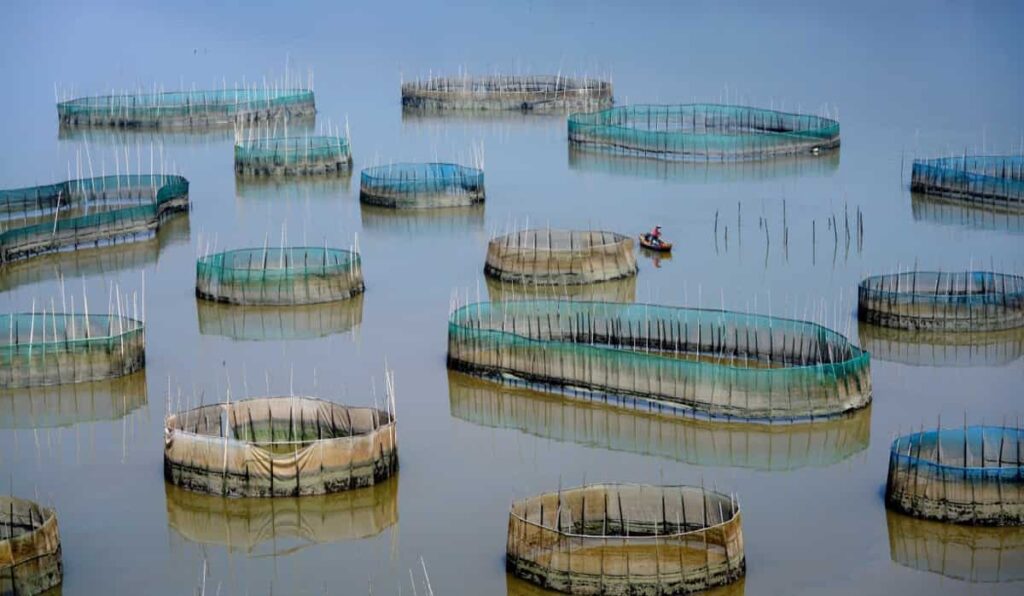
Minimise Chemicals and Veterinary Drugs
Using chemicals in pond preparation is common practice among farmers to eradicate predators and snails and maintain water quality parameters. Fish are sometimes treated with veterinary drugs to keep them healthy or to prevent them from getting ill. It is a fact that most of these chemicals end up in the culture water. When farm effluents are released, veterinary drugs and potentially deadly chemicals can enter the natural environment.
It is obvious that they will kill snails and pests in streams and lakes if they are designed for ponds and lakes. These chemical treatments can be eliminated with the correct farm knowledge and available natural alternatives. Additionally, treating sick fish in a separate, quarantined pond where chemicals are not released into the environment is better.
Plant Native Vegetation
Last but not least, planting trees around your farm is always a good idea. Trees provide shade, reduce wind effects, and can be a food source for people, fish, birds, and other animals. However, it should also be noted that for biosecurity purposes, the pond and directly adjacent areas should be kept clear of vegetation since aquatic weeds provide shelter for vectors and predators, and predators and other animals can hide in the pond’s dykes and dense vegetation.
Trees and other vegetation should be planted with local species or strains native to the area. You can enhance biodiversity and productivity in your area by attracting native and migratory birds, bats, insects, and other life forms.
Alternative Options for Sustainable Aquaculture
Promoting sustainable aquaculture development requires enabling environments that create and maintain continuous human resource development and capacity building. Several alternatives for sustainable aquaculture development include ecological aquaculture, organic aquaculture, composite fish culture, integrated aquaculture, and closed recirculatory systems.
Ecological Aquaculture
Ecological aquaculture has been defined as an alternative model of aquaculture research and development that brings the technical aspects of ecological principles and ecosystem thinking to aquaculture and concerns for the wider social, economic, and environmental context of aquaculture. Ecological aquaculture focuses on the development of farming systems that protect the environments in which they are situated and enhance the quality of these environments while at the same time maintaining a productive culture system.
In case you missed it: Common Fish Diseases, Symptoms, and Treatment: Check How this Guide Helps Fish Farmers
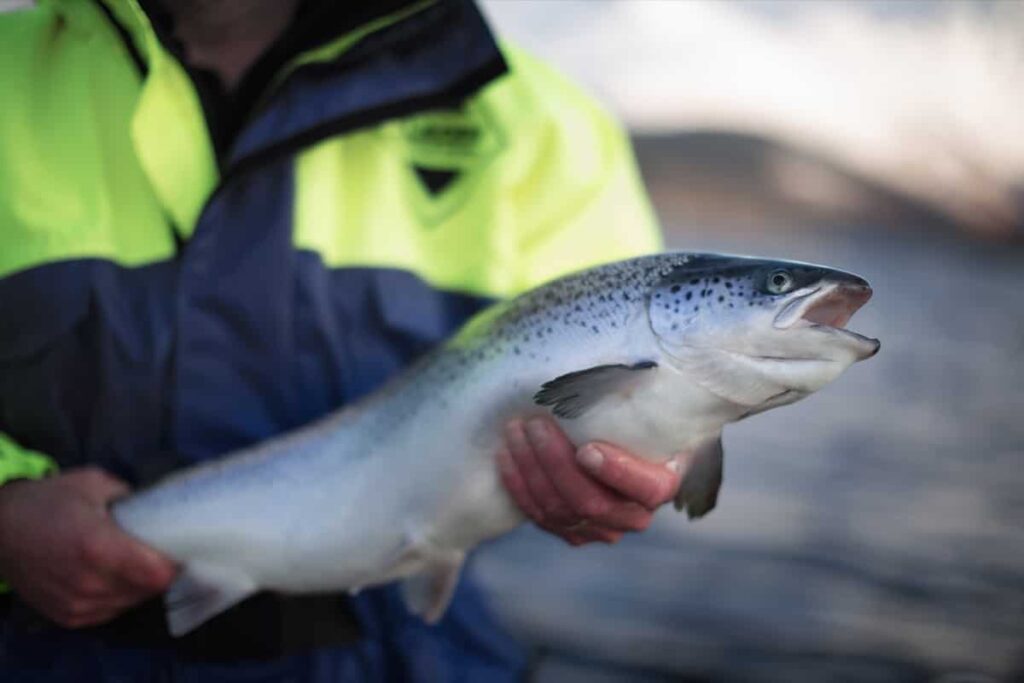
Organic Aquaculture
Sustainability is one of the main goals of organic food production. Some of the basic principles of organic aquaculture, according to the International Federation of Organic Agriculture Movements, are as follows-
- To encourage natural biological cycles in the production of aquatic organisms
- Using various methods of disease control
- No use of synthetic fertilizer or other chemicals in production
- Use of polyculture technologies whenever possible
Polyculture and Integrated Aquaculture
Polyculture and integrated aquaculture are methods of raising diverse organisms within the same farming systems. Each species utilizes a distinct niche and resources within the farming complex. This may involve rearing several aquatic organisms together or in conjunction with terrestrial plants or animals.
Recirculating System
Recirculating systems conserve water and allow control of environmental factors (temperature, salinity, and oxygen), predators, and the introduction and transfer of diseases. This system has less impact on the environment because of its close nature – wastes and uneaten feed are not simply released in the ambient environment. In the recirculating system, wastes are filtered out of the culture system and disposed of responsibly.
In case you missed it: How to Start Polyculture Fish Farming In India: Composite Fish Culture, Mixed Fish Farming Examples, Benefits, and Disadvantages
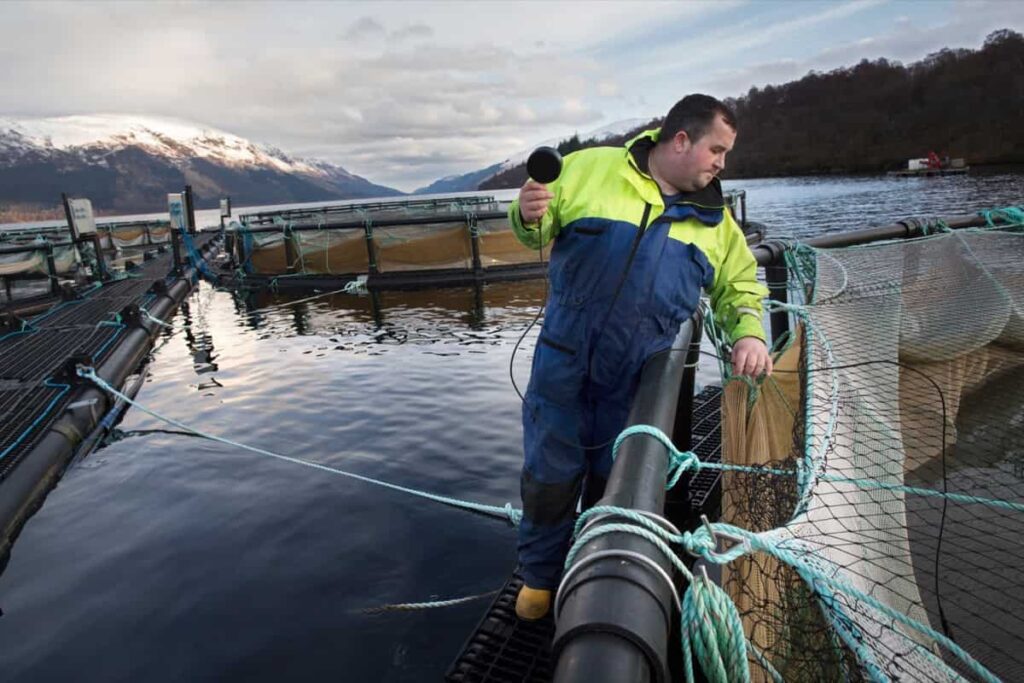
Conclusion
The aquaculture sector will face an immense challenge ahead. But with the industry growing and evolving simultaneously, the goal of feeding the world sustainably becomes an achievable goal. For that, sustainable aquaculture practice can be the best possible option available. Also, it needs more investment into sustainable aquaculture, which has immense potential to deliver healthy, sustainable food to meet the rapidly growing demand.
- How to Raise Pigs in Your Own Backyard: A Comprehensive Guide
- Budget Friendly Sheep Shed Ideas: Cheap and Low-Cost Tips
- How Much Do Cattle Farmers Make: Revenue Streams in Cattle Farming
- Management Pests and Diseases in Your Cotton Field
- Sheep Farming Business Plan for Beginners
- Aquaponic Farming at Home: A Step-By-Step Guide
- Profitable Village Farming Business Ideas in 2024
- High-Yield Aquaculture: Fast-Growing Fish for Farming
- Effective Fish Pond Construction Techniques for Beginners
- Irrigation and Water Management in Pineapple Farming
- Blossom to Harvest: Mastering Flowering and Pollination in Papaya Farming
- Pig Fattening Essentials: From Selection to Sale for Beginners
- Raising Wagyu Cattle: A Complete Guide for Premium Beef Production
- Soil Types and Their Water Holding Capacity
- Optimizing Irrigation Schedules for Coconut Groves for Enhanced Yield
- Espresso Your Garden: Coffee Grounds for Healthier Acid-Loving Plants
- The Best Soil Mix for Snake Plants: How to Mix Your Own Snake Plant Soil
- Green Thumb Success: Expert Tips for Cultivating Greenhouse Beans All Year Round
- Bloom All Year Round: The Ultimate Guide to Indoor Hyacinth Care
- Eco-Friendly Gardening: How to Make Liquid Fertilizer from Kitchen Waste
- Ultimate Guide to Grow Anise in Pots: Explore Seed Propagation to Harvesting
- Guide to Raising Chester White Pigs: Discover Breed Facts to Growth Management
- Mastering the Elegance: The Ultimate Guide to Weeping Cherry Tree Care, Planting, and Maintenance
- Ultimate Guide to Planting Garlic in Grow Bags: Growing Strategies for Beginners
- How to Fix Spider Plant Leaf-Related Problems: Natural and Organic Remedies
- 10 Reasons Why Your Tulsi Plant is Shedding Leaves: Home Remedies and Solutions
- Optimizing Growth and Yield: The Advantages of Palm Bunch Ash Fertilizer
- Utilizing Neem Oil Extract as a Natural Pesticide for Hydrangea
- From Soil to Harvest: Various Ways in Which Farmers Can Use AI Tools
- Steps to Encourage and Induce Citrus Flowers: A Comprehensive Guide
- How to Fix Snake Plant Leaf-Related Issues: Natural and Organic Remedies
- Transform Your Garden into a Fragrant Oasis with Raat Ki Rani (Night Blooming Jasmine)
- Discover the Ideal Chicken Breeds for Philippine Farms
- How to Create a Poultry Egg Farm Business Plan for Profits
- Grow Lemon Cucumbers Like a Pro: Insider Techniques for Bountiful Yields
- Ultimate Guide to Caring for Your Pink Princess Philodendron: Tips for Thriving Variegation
